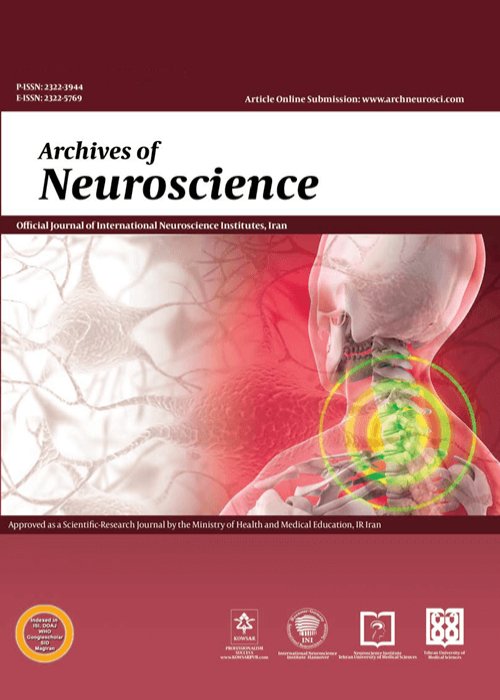Clinical Anatomy of the Lesser Petrosal Nerve
Author(s):
Abstract:
Context: The human lesser petrosal nerve (LPN) is a branch of the glossopharyngeal nerve (IX), with contributions from the facial (VII) and vagus (X) nerves. Its formation and course are highly variable and complicated. The purpose of this article was to review the literature regarding the clinical anatomy of the LPN.
Evidence Acquisition: The existing literature regarding this nerve was critically reviewed, with emphasis on its clinical significance.
Evidence Acquisition: The existing literature regarding this nerve was critically reviewed, with emphasis on its clinical significance.
Results
The LPN conveys the preganglionic parasympathetic fibers derived from the superior and inferior salivary nucleus. It is composed of fibers from the tympanic branch of the IX, the nervus intermedius of the VII, and the auricular branch of the X. The fibers from the nervus intermedius and the auricular branch of the X separate from the VII as the communicating branch, which then joins the tympanic branch of the IX to form the LPN. The LPN leaves the middle ear and enters the middle cranial fossa through canaliculus innominatus. It runs under the dura in its own groove. In the infratemporal fossa, it reaches the otic ganglion. The postganglionic parasympathetic fibers distribute mainly to the parotid gland. Combined damage to the greater superficial petrosal nerve (GSPN) and the LPN is associated with face hyperemia and profuse salivation from the parotid gland (following atropine administration), lacrimation (crocodile tears syndrome), and mucus nasal secretion. These phenomena are explained by the development of an ephaptic relation between the damaged nerves. An understanding of the relationships of the LPN will reduce the likelihood of confusing it with the GSPN during surgical approaches to the middle cranial fossa.Conclusions
The LPN is anatomically one of the most complicated nerves in humans. Quite thin and small, it follows a variable and complicated course to serve primarily the preganglionic part of the parasympathetic innervation of the parotid gland. Its clinical significance results mainly from its close relation to the GSPN on the floor of the middle cranial fossa.Keywords:
Language:
English
Published:
Archives of Neuroscience, Volume:3 Issue: 2, Apr 2016
Page:
2
magiran.com/p1561452
دانلود و مطالعه متن این مقاله با یکی از روشهای زیر امکان پذیر است:
اشتراک شخصی
با عضویت و پرداخت آنلاین حق اشتراک یکساله به مبلغ 1,390,000ريال میتوانید 70 عنوان مطلب دانلود کنید!
اشتراک سازمانی
به کتابخانه دانشگاه یا محل کار خود پیشنهاد کنید تا اشتراک سازمانی این پایگاه را برای دسترسی نامحدود همه کاربران به متن مطالب تهیه نمایند!
توجه!
- حق عضویت دریافتی صرف حمایت از نشریات عضو و نگهداری، تکمیل و توسعه مگیران میشود.
- پرداخت حق اشتراک و دانلود مقالات اجازه بازنشر آن در سایر رسانههای چاپی و دیجیتال را به کاربر نمیدهد.
In order to view content subscription is required
Personal subscription
Subscribe magiran.com for 70 € euros via PayPal and download 70 articles during a year.
Organization subscription
Please contact us to subscribe your university or library for unlimited access!


